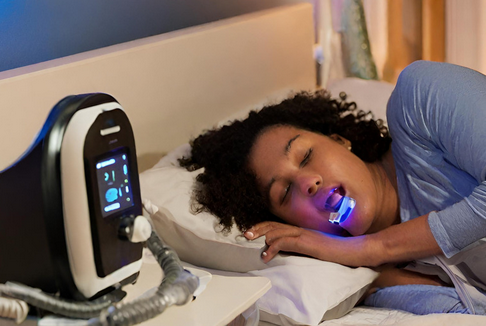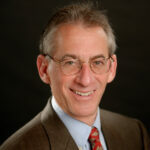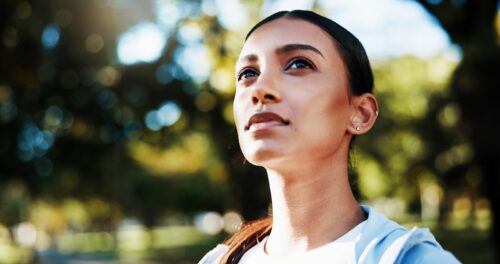Sleep Apnea in Psychiatry

TCPR: What do psychiatrists get wrong about sleep?
Dr. Krakow: Too often they assume that sleep problems are caused by a psychiatric disorder and that sleep will improve if the disorder is treated. They may also teach sleep hygiene and prescribe a hypnotic, but these approaches do not lead to a deeper exploration of the problems. The vast majority of mental health patients with sleep issues are in fact suffering separate or independent sleep disorders, like sleep apnea, nightmares, restless legs, or periodic limb movement disorder (ie, “leg jerks”).
TCPR: When should we refer for a sleep study?
Dr. Krakow: When the patient is not responding to hypnotics and sleep hygiene, it should be a red flag that more needs to be evaluated. That’s when a sleep study is often indicated to detect the sleep disorders I just mentioned. Those disorders cause sleep fragmentation, and that is not going to be fixed with hypnotics or sleep hygiene.
TCPR: What is sleep fragmentation?
Dr. Krakow: It is repeated, brief interruptions of sleep, often hundreds of times per night. The poor sleeper has virtually no awareness of the interruptions, although they do feel exhausted the next day. Physiological sleep disorders such as sleep apnea, restless legs, and leg jerks are the primary causes. Sleep fragmentation worsens psychiatric disorders, and treatment of the underlying sleep disorder often improves mental health.
TCPR: I agree that poor sleep quality contributes to a lot of psychiatric disorders. But patients seem more focused on whether they can fall asleep.
Dr. Krakow: Yes, sleep initiation has two facets: whether patients can fall asleep at bedtime, and whether they can fall back asleep if they wake in the middle of the night. Younger patients tend to have problems at bedtime, but after age 40, it shifts. Older adults have problems waking up too much in the middle of the night, unable to fall back asleep. However, an insomnia complaint often leads the health care provider astray because it directs the conversation toward sleep quantity instead of sleep quality. That conversation is not going to get to the underlying cause of why someone wakes up at night.
TCPR: What makes people wake up in the middle of the night?
Dr. Krakow: Most people think it’s due to stress or anxiety, but that’s not quite so. We conducted a study among people with severe chronic insomnia. These were not typical “sleep apnea” patients—none were overweight, none reported breathing problems at night, and none were sleepy during the day. But what we saw was an alarmingly high rate of sleep-disordered breathing—in 90% of their middle awakenings (Krakow B et al, Sleep 2012;35(12):1685–1692). Only some of them were apneas, which is where breathing totally stops, but many had hypopneas (diminished breathing) or respiratory effort–related arousals (which is when they are struggling to breathe), and it causes them to wake up. All of these are sleep-related breathing problems. They are “mini-suffocations” that suddenly wake them up as their sympathetic nervous system goes from 0 to 60 in a matter of seconds. Yet not one patient believed that something physically was disrupting their sleep when they entered the study. They all believed their insomnia was exclusively psychological.
TCPR: I understand sleep apnea causes middle awakenings, but it seems a lot of people also wake up to urinate.
Dr. Krakow: There, again, sleep apnea should be on the differential because it can cause nocturia (waking up to urinate). When breathing is compromised during sleep, it puts pressure on the cardiovascular system, and that causes the heart’s right atrium to release a diuretic, triggering the kidneys to produce more urine (Editor’s note: Dr. Krakow explains this further in a brief video at www.nocturiacures.com).
TCPR: What are other signs of sleep apnea?
Dr. Krakow: Indirect signs include waking up with a dry mouth or a headache, poorly controlled hypertension, memory and concentration deficits, and so-called “brain fog.” Most confounding for psychiatrists is that sleep apnea also causes fatigue and depression.
TCPR: So we should think about sleep apnea in patients with depression and chronic insomnia.
Dr. Krakow: Absolutely, and PTSD. Sleep apnea is very common in PTSD. Conservative estimates are 40%–60% in chronic PTSD, and some studies go to 80%–90% (McCall CA and Watson NF, J Clin Med 2022;11(2):415). These patients don’t look like the “middle-age, overweight man” stereotype of sleep apnea. They may be young and thin, but something is causing their airway to collapse while they are asleep. It may be related to nightmares, sleep fragmentation, or sympathetic hyperarousal. We don’t know for sure. Or they may have been born with a smaller, vulnerable upper airway tract.
TCPR: PTSD can cause sleep apnea even in the young and thin, but outside of that, does the stereotype of an older, overweight man still fit?
Dr. Krakow: Not very well. Obesity does not cause sleep apnea, but it can make sleep apnea worse. It’s the facial structure that’s causing the sleep breathing disorder: the oral airway, the nasal cavities, and the neck. Age is a risk factor, but in my experience it’s the chronicity of the insomnia that matters, and age may just be a marker for chronicity. I suspect sleep apnea when insomnia persists for several years and is not responding to standard treatments.
TCPR: Why are more people using at-home tests instead of an overnight sleep lab to diagnose sleep apnea?
Dr. Krakow: Costs have moved insurers toward home testing, and the pandemic amplified this trend. Home testing is more limited because it doesn’t measure sleep architecture. It just measures breathing and oxygen. Some devices attempt to estimate depth of sleep through their own proprietary algorithms. Home tests are more prone to false negatives and may miss the diagnosis, but if a person gets a home sleep study, they’ve at least gotten a start and some data. In-lab testing is much more comprehensive and reliable but also deemed too costly.
TCPR: How is sleep apnea treated today?
Dr. Krakow: There are two main devices: CPAP (continuous positive airway pressure), which delivers fixed continuous airway pressure, and Bi-Level (brand name BiPAP), which lowers pressure during exhalation. CPAP is more difficult to use because it delivers the same high pressure whether you are breathing in or out. Because of that, CPAP often causes a condition called expiratory pressure intolerance as people have to fight the machine to exhale. The result is more arousals and fragmented sleep.
TCPR: Is Bi-Level better tolerated?
Dr. Krakow: Yes. It’s an astonishing difference. In particular, patients have much better consolidation of REM sleep, which is a stage of sleep that is most problematic for people with sleep apnea. Breathing and oxygen levels tend to worsen during REM, so higher pressures are needed. Bi-Level provides a strong pressure when breathing in and then drops the pressure when breathing out. The airflow normalizes and patients find it much more comfortable, not to mention their enhanced outcomes.
TCPR: Why would someone use CPAP instead?
Dr. Krakow: Cost. Many insurers require a trial of CPAP before they will pay for a Bi-Level machine. This is unfortunate as many patients give up and then refuse to try a different device. It’s a shame because if patients were permitted to start first thing with, say, an auto-Bi-Level device or an adaptive servo-ventilation device (ASV, an advanced form of Bi-Level), they would adapt very quickly and stick with therapy, which in the end leads to greater healthcare savings (Krakow B et al, eClinicalMedicine 2019;13:57–73; Watson NF, J Clin Sleep Med 2016;12(8):1075–1077).
TCPR: Do some patients develop phobias of these breathing machines?
Dr. Krakow: Yes. The pressure can feel like suffocating or “drowning in air,” but that improves with a switch to Bi-Level. Another problem is the mask, which makes some feel claustrophobic. This problem is easier to fix as there are many mask options. A new one, Bleep Sleep, involves no headgear. The tube is attached to magnets taped to the nose. Surprisingly, one of the best inventions for claustrophobia is a full face mask. This large space provides a pool of air inside the mask, and it eliminates the sensation of air being shoved down the throat.
TCPR: Are there any options for patients who don’t stick with CPAP or Bi-Level?
Dr. Krakow: A dental device and a nasal dilator are simple ways to open the airways, but they are still devices. Nasal hygiene, which means improving airflow through nasal sprays or nasal strips, is even simpler and makes a big difference for some. Patients with sleep-related breathing problems should aim for no congestion, no mucus, and no whistle or stuffiness as they breathe through their nose. People with allergic or nonallergic rhinitis could benefit from numerous interventions, including nasal sprays like Astelin, Astepro, and Patanase (which are all antihistamines) and Atrovent (an anticholinergic nasal spray). We have had the most success with Sensimist (a variant of Flonase), and there is a newer version of this, XHance, which may prove even more efficacious. When patients succeed with these first steps, they become more open to PAP therapy. We think what’s happening is the conservative treatment of the nose leads to improved sleep quality, which in turn persuades the patient to accept the reality of the sleep-related breathing disorder.
TCPR: Which hypnotics are safest in sleep apnea?
Dr. Krakow: The main thing is to avoid benzodiazepines because they can suppress respiratory drive. Compared to benzos, the z-drugs (eszopiclone, zaleplon, and zolpidem) tend to be safer (Nigam G et al, Ann Thorac Med 2019;14(1):49–55). Trazodone has a long track record, particularly at the VA, and it also deepens sleep, which is a good thing. But most of the time my goal is to reduce sedatives and use behavioral interventions like CBT-insomnia in combination with a PAP machine.
TCPR: Some patients with sleep apnea tell me they no longer need the PAP machine and stop following up with their sleep doctor. Can sleep apnea be cured?
Dr. Krakow: Most patients need follow-up. Unless they’ve had maxilla-mandibular surgery, cures are very rare in sleep apnea. Weight loss helps, but it rarely cures because the oral airway and nasal anatomy are still prone to collapse.
TCPR: What are the consequences of untreated sleep apnea?
Dr. Krakow: Untreated sleep apnea worsens every mental health condition—notably anxiety, depression, and PTSD—and newer evidence suggests it is a risk factor in suicide. It promotes cardiovascular risk as well: hypertension, arrhythmias, endothelial dysfunction, proinflammatory states, oxidative stress—the latter three destroy the inner linings of the blood vessels. Sleep apnea worsens diabetes and kidney function, and it’s likely a precursor to or risk for dementia. My motto is: Sleep well and prosper.
TCPR: Thank you for your time, Dr. Krakow.
 Barry Krakow, MD.
Barry Krakow, MD.


_-The-Breakthrough-Antipsychotic-That-Could-Change-Everything.jpg?1729528747)



